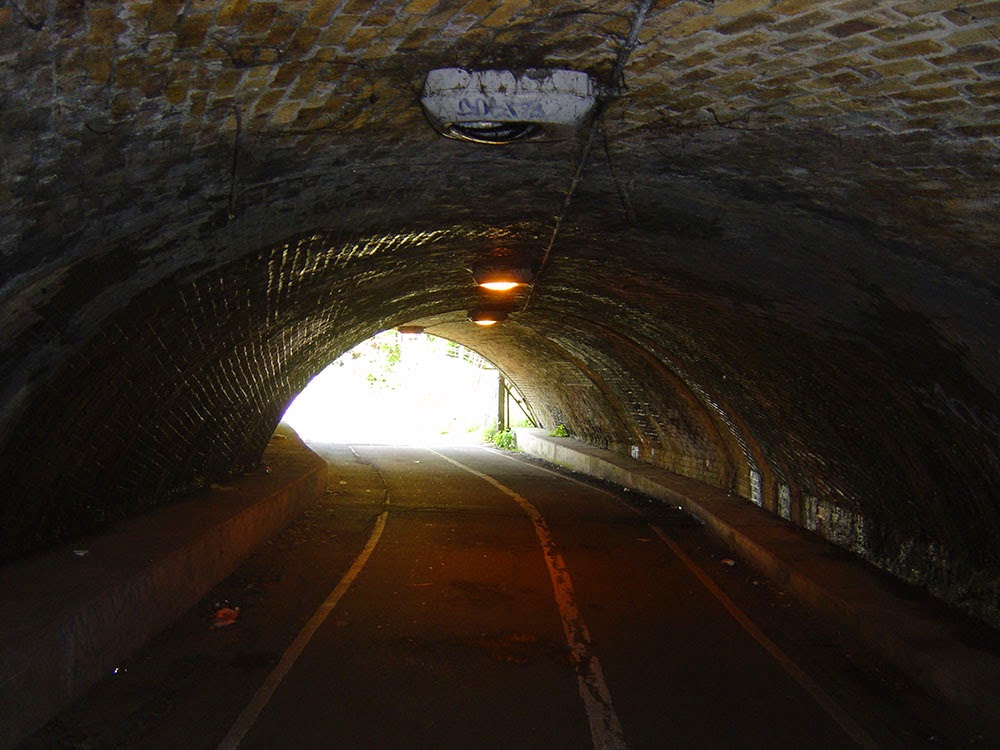Go out and photograph your local environment in two ways...
This is the first part of the exercise. I've photographed an area in my town using my compact camera on it's standard focal length setting. This is to get a 'warts and all' feel for the place without thinking too much about the aesthetics of photographic composition. I've not used this camera for many years and had to dig it out of storage and check that it still works. It was strange not having access to the zoom feature and also realising that my compositions could be a bit off because of the camera's viewfinder being separate from the lens. I tended to take wider shots because of this. I haven't cropped any of the images and just applied some levels processing to compensate for the cameras overexposure at times. It was actually quite enjoyable wandering around the small area of the town without having to think about exposure settings for once.
Write around 250 words reviewing your images in your blog. To what extent have you managed to to show the 'truth' about your town or area?
This is a difficult question to answer.
I decided to photograph a small area of access roads and paths that
link the domestic and international rail station and Ashford Designer
Outlet. I haven't tried to beautify the images in any way. There were
plenty of planted tubs around that I could have used in the
foreground of my images in a sort of postcard style if I had wanted
to. But does that mean my images are a 'true' representation? I'm not
so sure. For a start I am always interested in the 'mundane and
everyday' and my photography tends to gravitate in that direction.
That I chose the 'behind the scenes' access roads rather than the
more formal entrances to these spaces shows that, before I even began
the project, I made a conscious decision to portray the images from a
certain aesthetic viewpoint. John Szarkowski, in his introduction to 'The Photographer's Eye', states that a photographer has:
[...] learned also that the factuality of his pictures, no matter how convincing and unarguable, was a different thing than the reality itself. Much of the reality was filtered out [...] and some of it was exhibited with an unnatural clarity, an exaggerated importance. The subject and the picture were not the same thing, although they would afterwards seem so. Szarkowski, (1966).
[...] learned also that the factuality of his pictures, no matter how convincing and unarguable, was a different thing than the reality itself. Much of the reality was filtered out [...] and some of it was exhibited with an unnatural clarity, an exaggerated importance. The subject and the picture were not the same thing, although they would afterwards seem so. Szarkowski, (1966).
One aspect that is missing from the
images is people. I avoided photographing the steady trickle of
people arriving and departing from the stations for self conscious
reasons – I find it so hard to be seen capturing images of
strangers in my local area. It is telling that in the one image
depicting people at the bus stop they have their backs to me. I am
more comfortable working in big cities like London. For one, the
people are more used to it - what with the number of camera toting
tourists everywhere. In small towns like Ashford a lone photographer
is much more conspicuous.
In summing up I'd say if a person was
to go to this area and had seen the images beforehand then on the
whole they would recognise it as a fairly truthful representation. But if that person were to take one step sideways or turn around they might be surprised by what they saw – They would also probably be struck by how much busier the paths and roads
are.
Access to Ashford International Station
Tunnel under domestic rail line
Access to domestic rail services
Footbridge over stream and elevated section of HS1 track
Typical contents of the stream
More discarded rubbish
Footbridge to domestic rail station
Landscaped area close to the domestic rail station
Buses and cycle racks provide access to additional transport services
Underpass artwork and graffiti
Long term station and overflow parking for Ashford Designer Outlet
Ashford Designer Outlet
References:
Szarkowski, J. (1966) 'Introduction' to The Photographer's Eye. NY: MOMA. Reprinted (1980) London: Secker & Warburg.












No comments:
Post a Comment